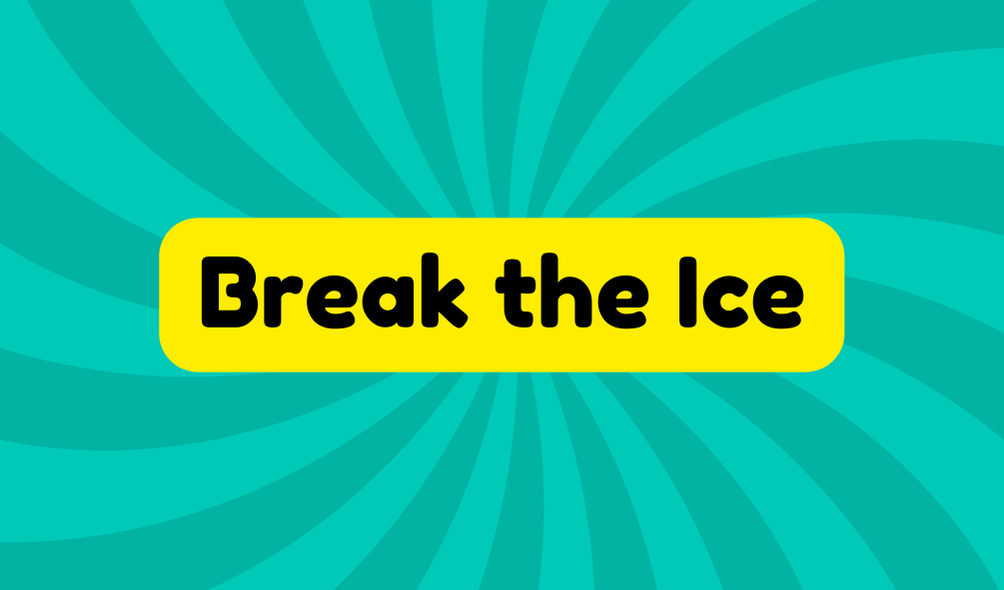"Break the ice" refers to making the first move in conversations, easing tensions, and initiating dialogue. Its origin goes back to the 16th century, where it literally meant clearing blocked paths. Over time, it evolved into a metaphor for encouraging social interaction, often seen in Shakespeare's works. You might hear it in sentences like, "Julie used a joke to break the ice at the party." Today, these skills are more important than ever, facilitating connections in our fast-paced, interconnected society. Want to grasp how these concepts apply in different scenarios? There's more to explore here.
Synonyms
When you think of synonyms for "break the ice," several phrases come to mind that convey a similar concept of easing social tension. These alternatives can be quite effective for fostering social engagement in various settings. Here are a few significant phrases:
- Start a conversation
- Ease into dialogue
- Kick off discussions
- Set the tone
Each of these phrases serves as effective conversation starters, aiming to loosen up the atmosphere and invite interaction. However, it's important to recognize that not every approach works for everyone. Some people might respond better to structured activities, while others prefer casual chats. Ultimately, the key is to remain adaptable, ensuring you meet the needs of diverse social situations while promoting friendly engagement.
Example of Sentences
Breaking the ice is an essential skill in social settings, and using relatable examples can help illustrate its importance. Recognizing how social dynamics play out enables you to employ effective communication strategies. Here are some ideal sentences to reflect upon:
- "When Julie walked into the room, she quickly cracked a joke to break the ice."
- "At the meeting, Mark introduced a simple game, making everyone feel more comfortable."
- "The awkward silence at dinner vanished when Sarah complimented the host's new decor."
- "In the first class, the teacher shared a funny story, successfully breaking the ice."
These sentences highlight how you can ease tension, foster friendly interactions, and create an inviting atmosphere, essential for successful networking. Don't underestimate the power of these initial connections!
Origin
The origin of the phrase "break the ice" traces back to its literal meaning of clearing obstructed paths, which has evolved over centuries. Historically, this idiom first appeared in the writings of Sir Thomas North in 1579 and gained traction in 17th-century poetry, marking a significant linguistic development. Samuel Butler referenced it in his work Hudibras in 1663, while an earlier mention emerged in Shakespeare's The Taming of the Shrew around 1590. It's intriguing how this expression shifted from a practical concept into a metaphorical tool for social interaction. By knowing its historical usage, you can appreciate the depth and versatility of "break the ice," questioning how language adapts to our changing communication needs over time.
Collocations
Understanding the expression "break the ice" opens the door to exploring its collocations, which are words commonly used together with the phrase. These collocations help you navigate social situations more smoothly, creating an environment of social comfort. Here are some important collocations to take into account:
- Icebreaker games
- Breaking the silence
- Icebreaker questions
- Social gatherings
Using these terms can enhance your approach to initiating conversations or activities. For instance, engaging in icebreaker games often takes the pressure off, making interaction feel more natural. However, relying solely on these tactics can be superficial if you're not genuinely connecting with others. Balancing these collocations with authentic interaction is key to breaking the ice effectively and creating meaningful relationships.
How to Use in Everyday Language
Engaging in casual conversations can feel intimidating, but using the phrase "break the ice" can be a game-changer. You might notice that many social interactions start off awkwardly, making it essential to apply effective networking strategies. To break the ice, try simple approaches like asking open-ended questions or sharing a lighthearted story. When you're at a gathering, remember that a compliment or a well-timed joke can set the right tone and ease tension. Don't overthink it; just aim to create a relaxed atmosphere where everyone feels included. Ultimately, these strategies can not only enhance your social connections but also make events more enjoyable for everyone involved. So go ahead, take that leap, and break the ice!
Why Is It Still Relevant Today?
Using strategies to break the ice remains relevant today because social dynamics continue to evolve. In our fast-paced world, effective networking strategies can be the difference between success and stagnation. You might think that casual conversation is trivial, but it's vital for forging connections. As interactions shift, understanding how to initiate friendly engagement helps bridge gaps between individuals and groups. This isn't just about filling awkward silences; it's about fostering inclusivity and collaboration. Without these skills, you risk isolating yourself in an increasingly connected society. So, while the methods may change, the necessity to break the ice remains. Embracing this can enhance both personal and professional relationships, providing a sustainable edge in a competitive landscape.







